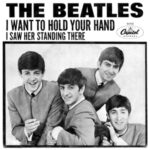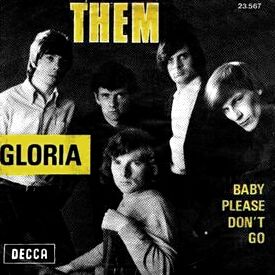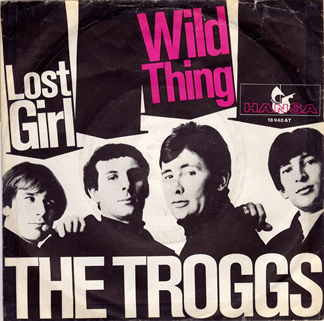 When 1963 arrived, rock and roll was still searching for its next great identity. Elvis had gone to Hollywood, Buddy Holly was gone, and American pop radio was flooded with sugary teen ballads and surf songs. But across the Atlantic, in a Liverpool basement that smelled of cigarette smoke and dreams, four young men were on the verge of reshaping music history. John Lennon, Paul McCartney, George Harrison, and Ringo Starr — The Beatles — were about to launch a global revolution that would define not only a generation but an entire era of sound and style. And the spark that lit the fuse was a three-minute burst of pure melodic joy called “I Want to Hold Your Hand.”
When 1963 arrived, rock and roll was still searching for its next great identity. Elvis had gone to Hollywood, Buddy Holly was gone, and American pop radio was flooded with sugary teen ballads and surf songs. But across the Atlantic, in a Liverpool basement that smelled of cigarette smoke and dreams, four young men were on the verge of reshaping music history. John Lennon, Paul McCartney, George Harrison, and Ringo Starr — The Beatles — were about to launch a global revolution that would define not only a generation but an entire era of sound and style. And the spark that lit the fuse was a three-minute burst of pure melodic joy called “I Want to Hold Your Hand.”
Released in late 1963 and exploding across the United States in early 1964, “I Want to Hold Your Hand” wasn’t just another pop song. It was the pop song — the moment the world went from black and white to color. It was the start of Beatlemania, the British Invasion, and arguably modern pop culture itself. Decades later, it still sounds like bottled youth, a track that captures the exact moment innocence met innovation.
The Song That Started It All
By the fall of 1963, The Beatles were already local heroes in the UK. They’d released “She Loves You” earlier that year, which had topped the British charts and established their trademark call-and-response harmonies. But they hadn’t yet cracked America, the market that could make them immortal. Manager Brian Epstein knew they needed something more polished — something tailor-made for American ears.
John and Paul wrote “I Want to Hold Your Hand” together, sitting side by side on a piano bench in the basement of Paul’s girlfriend Jane Asher’s London home. That proximity — two young songwriters literally elbow-to-elbow — is fitting, because the song radiates closeness, unity, and unfiltered joy. McCartney later recalled, “We wrote it to be the one that would get us a hit in America.” He was right.
When it hit British airwaves in November 1963, the nation went berserk. But its real detonation came across the Atlantic in early 1964, just weeks before The Beatles’ historic appearance on The Ed Sullivan Show. “I Want to Hold Your Hand” became their first U.S. number one, knocking Bobby Vinton off the charts and ushering in a cultural tidal wave unlike anything before or since.
This was more than a song — it was a signal flare. It told an entire generation that something new had arrived.
The Sound of Innocence and Innovation
What makes “I Want to Hold Your Hand” so timeless isn’t just its simplicity, but how that simplicity hides genius. The opening guitar chord — a chiming, major-key invitation — is immediately followed by handclaps and Lennon’s voice bursting through with uncontainable excitement: “Oh yeah, I’ll tell you something…” From that very first second, you can hear the energy of youth, friendship, and discovery.
The Beatles built the track on a foundation of pure rhythm. There’s no bass intro, no dramatic buildup. The beat just is, pulsing with Ringo’s propulsive, steady drumming. The guitars are bright and crisp, mixed to sound as if they’re practically smiling. George Harrison’s lead licks are sharp but playful, never overbearing, while Paul’s bass lines are agile and melodic, dancing underneath without drawing too much attention.
And then there are the harmonies — Lennon and McCartney’s twin voices intertwining like strands of DNA. There’s a reason they called it the “Lennon-McCartney” sound: each completed the other. John’s rawness gave Paul’s sweetness depth; Paul’s optimism softened John’s edge. Together, their voices made “I Want to Hold Your Hand” feel both tender and electrifying.
Musically, the song is deceptively sophisticated. Its chord changes — particularly the shift from G to D to Em to B7 — create a sense of constant forward motion. There’s an almost gospel-like lift when they hit “I can’t hide…” that feels like emotional release, as if the song itself is blushing with honesty.
This wasn’t just another teen love tune. It was a declaration of pure connection — not lust, not heartbreak, but affection. The kind that feels overwhelming and sweet all at once.
The Beatlemania Catalyst
When Capitol Records finally released “I Want to Hold Your Hand” in America on December 26, 1963, something extraordinary happened. Within weeks, it had sold over a million copies. By February 1964, it was number one, and the Beatles were booked to appear on The Ed Sullivan Show. On February 9th, more than 73 million viewers — nearly half the U.S. population — tuned in to watch them perform it live.
That night, everything changed. Teenage girls screamed, fainted, cried. Parents frowned. Boys grew their hair out. Guitars sold out in stores across the country. Rock and roll, which had briefly gone dormant, was suddenly alive again — reborn through the charm and cheek of four young men from Liverpool.
And at the heart of it all was “I Want to Hold Your Hand.”
It wasn’t provocative or dangerous. It didn’t need to be. Unlike the hip-shaking sexuality of Elvis or the swaggering confidence of Chuck Berry, The Beatles’ appeal was in their sincerity. They weren’t promising sin — they were promising a smile. When Lennon and McCartney sang, “I want to hold your hand,” they tapped into something universal and disarming. It was a love song that anyone could believe in, whether you were sixteen or sixty.
That accessibility made it revolutionary. The Beatles didn’t kick down doors with attitude — they opened them with joy.
A Song That Still Feels Alive
Listening to “I Want to Hold Your Hand” today, over sixty years later, it’s astonishing how fresh it still feels. The production (handled by George Martin at EMI’s Abbey Road Studios) was crisp and ahead of its time. Martin, often called the “fifth Beatle,” captured their energy with a clarity that remains unmatched. The stereo version, with Lennon’s and McCartney’s vocals split between channels, gives the track an intimacy — like they’re sitting right beside you, trading smiles.
What really keeps the song alive, though, is its emotional truth. The Beatles would go on to explore deeper subjects — loneliness, spirituality, politics — but “I Want to Hold Your Hand” represents the purest form of their magic: the ability to make joy sound revolutionary.
It’s also one of those rare songs that can instantly transform a mood. Whether it’s playing over an old radio, at a wedding, or in a movie like Across the Universe or Yesterday, it still feels contagious. Its optimism isn’t naive; it’s human.
Even as The Beatles evolved into the experimental giants of Revolver and Sgt. Pepper’s Lonely Hearts Club Band, they never lost that spark that began here. You can draw a straight line from the handclaps of “I Want to Hold Your Hand” to the sonic dreamscapes of “Lucy in the Sky with Diamonds.” The DNA is the same — curiosity, harmony, and emotional truth.
Breaking Down the Moment
The song’s bridge is one of the greatest transitions in pop history. When McCartney sings, “And when I touch you, I feel happy inside,” it’s like a burst of sunlight through clouds. Then Lennon answers with that ecstatic “It’s such a feeling that my love / I can’t hide…” — and the energy soars.
That’s the magic of early Beatles songwriting: they knew exactly how to make music move. Every shift in “I Want to Hold Your Hand” feels like an emotional step closer to the person it’s sung to. The melody climbs, the harmony tightens, and the rhythm pushes you forward until you’re swept up in it.
And then it ends — abruptly, joyfully — leaving you grinning.
The Aftershock
“I Want to Hold Your Hand” didn’t just top the charts; it detonated them. It spent seven weeks at number one in the U.S. and stayed in the Top 50 for fourteen weeks. By April 1964, The Beatles held the top five spots on the Billboard Hot 100 — a feat no one has ever matched.
The song became the doorway through which America — and eventually the world — entered Beatlemania. It was the Beatles’ handshake with history. Without it, there would be no “Yesterday,” no “Hey Jude,” no “Let It Be.” It was the beginning of the greatest run in modern music.
Even the band members themselves recognized its importance. Lennon later called it “the song that changed our lives,” while McCartney said it “opened the floodgates.”
And it changed the course of rock and roll itself. After “I Want to Hold Your Hand,” pop wasn’t just about moon and June rhymes anymore. The Beatles proved you could write songs that were both catchy and clever, simple yet sophisticated. They raised the bar for everyone — from the Beach Boys to Bob Dylan, who reportedly decided to “go electric” after hearing The Beatles’ early hits.
The Eternal Spark
What’s most striking about “I Want to Hold Your Hand” today is how sincere it still sounds. In an era of overproduced pop and auto-tuned emotion, there’s something pure about four young men singing about something as small and enormous as holding hands.
It’s easy to forget how radical that innocence was in 1963. The world was teetering between postwar optimism and Cold War anxiety. President Kennedy had just been assassinated weeks before the song hit America. Then came The Beatles — smiling, mop-topped, brimming with life. “I Want to Hold Your Hand” wasn’t escapism; it was hope.
It told the world that connection — even the simplest kind — still mattered.
Legacy of a Touch
More than six decades later, “I Want to Hold Your Hand” still holds up as one of the greatest pop songs ever recorded. It’s been covered by everyone from Al Green to T.V. Carpio in Across the Universe. It’s in the Rock and Roll Hall of Fame’s list of “500 Songs That Shaped Rock and Roll.” And it continues to serve as shorthand for that moment when pop music became more than entertainment — it became a movement.
Every modern boy band, every viral love song, every catchy chorus about connection owes something to this record. It’s not just nostalgia; it’s lineage.
Holding On Forever
“I Want to Hold Your Hand” may seem quaint now — a song about holding hands in a world that often moves too fast for touch. But maybe that’s exactly why it endures. It’s a reminder that joy can be simple, that love can be clean, and that sometimes, the most world-changing thing you can do is reach out and take someone’s hand.
From that tiny gesture, The Beatles built a universe. And when the needle drops, when Lennon and McCartney’s voices rise together in perfect harmony, it’s impossible not to smile.
Because even after all these years, that hand is still outstretched — inviting us to feel something real again.


